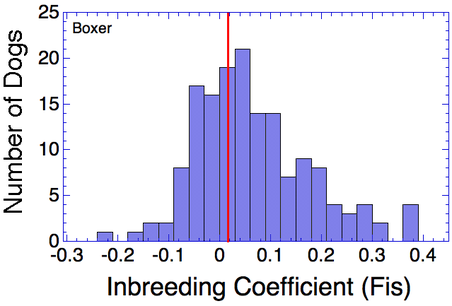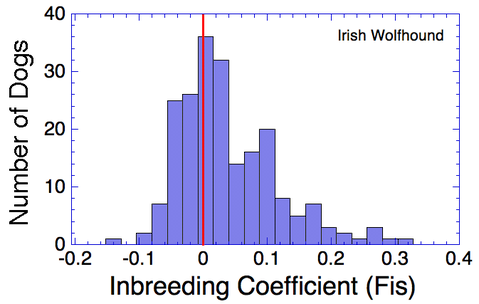In a large, genetically diverse population in which mating is random, you would expect inbreeding to occur only rarely because the probability of two related individuals mating is low. If we were to find that there was a higher level of inbreeding in this population than what would be expected just by chance, that would be evidence of non-random mating of related individuals; i.e., preferential inbreeding.
In a nutshell, a positive Fis indicates inbreeding; a negative Fis indicates avoidance of inbreeding.
These data show that better choices when selecting breeding pairs could slow the rate of increase in inbreeding in both breeds and also lower the risk of genetic disorders caused by recessive mutations.
ICB's online courses
***************************************
Visit our Facebook Groups
ICB Institute of Canine Biology
...the latest canine news and research
ICB Breeding for the Future
...the science of animal breeding



